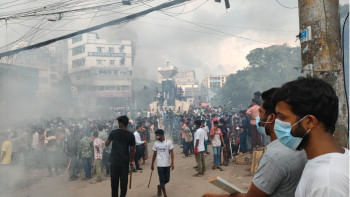Are we serious about ending violence against children?

A report titled, "Keeping the Promise: Ending Violence Against Children by 2030" has recently been presented by Najat Maalla M'jid, Special Representative of the Secretary General on Violence Against Children, at a side event, "Putting Children at the Heart of the 2030 Agenda" during the UN High-Level Political Forum on Sustainable Development (HLPF).
The report reminded us that even after 30 years of adoption of the United Nations Convention on the Rights of the Child, violence against children remains hidden in many places. She urged Member States, UN agencies and civil society to be more proactive to end violence against children by 2030.
It is worth mentioning that the 2030 Agenda for Sustainable Development includes a distinct Target (SDG 16.2) that pledges to: end abuse, exploitation, trafficking and all forms of violence and torture against children by 2030. According to Najat's report, "Despite the positive developments seen in recent years, the urgent need to protect children from violence has not diminished. No country or region is 'immune' to violence against children. Every five minutes, somewhere on our planet, violence takes the life of another child. Every year, at least 1 billion children—half of the world's children—suffer violence." The situation should alarm us all. But are we giving violence against children the attention it deserves?
SDG 16 was one of the SDGs that have gone through in-depth review at the July HLPF. While attending a series of events on violence against children, I have been thinking of all the children I met in different parts of world whose lives have been shattered by violence. Moreover, I was also reminded of the weak implementation of laws and policies, and the limited investment to protect children, as well as the social norms that make violence against children acceptable in many places.
Violence against children is a violation of their right to be protected from harm, abuse and neglect. Violence affects children's development, health and education in adverse ways, and weakens efforts to ensure sustainable development.
The violence children face is cumulative and interlinked, which often spans their home life, school, community and online world. Any child subjected to violence in any of these settings is likely to experience violence in any or all of the others. Studies show that children exposed to violence at an early age are more likely to be victims of violence later. They may also become perpetrators and use violence against their partners and children. This means we must end violence against children if we are to stop the inter-generational cycle of violence in society.
We know that every child is vulnerable to violence. However, some are more vulnerable due to key risk factors, including discrimination, poverty, disability and gender. Certain forms of violence affect girls disproportionately, while boys are also being affected more than we had thought earlier. According to Save the Children, almost one fifth of the children worldwide are now living in areas affected by armed conflict and are disproportionately suffering the consequences of violence.
In addition to direct impact of violence against children, there is also the matter of the significant financial cost it entails. According to some estimates, the total cost of physical, sexual and psychological violence against children (measured indirectly as losses in future productivity) ranges between two percent and five per cent of global GDP. This may reach up to eight percent of global GDP—about USU 7 trillion.
In general, very little progress has been made to address SDG 16, and with regard to some targets, we are going backwards. SDG 16 is the moral backbone of the 2030 Agenda, since it recognises the equal standing of every person. Renewed efforts are necessary to make the realisation of SDG 16 into a reality, which includes bringing more momentum to end violence against children.
Violence is not inevitable. There is solid evidence that it is preventable. International agencies have developed and endorsed the evidence-based package INSPIRE: seven strategies for ending violence against children. There is evidence that a comprehensive approach that reinforces entire systems would work. Now we need political commitment to act urgently to end this malaise.
Governments should prioritise ending violence against children and allocate adequate funding in child protection systems. Donors should increase funding for child protection services and violence prevention and response interventions. Governments, international agencies and civil society must facilitate processes to ensure safe, meaningful and active inclusion of children's voices in combating violence.
All actors need to work together to end harmful practices and change the social norms that drive those practices.This should include promoting gender equality, positive parenting, early learning and inclusive quality education. Governments should deliver their commitments to uphold the internationally agreed standards of conduct in conflict, hold perpetrators of violations of child rights to account, and take practical action to effectively protect children and support their recovery.
If we do not end all forms of violence against children, we risk jeopardising efforts to build peaceful, just and inclusive societies. The time for action is now and we all need to join the movement to protect our children.
The writer is Head of Advocacy and Policy—Child Protection, Save the Children International

 For all latest news, follow The Daily Star's Google News channel.
For all latest news, follow The Daily Star's Google News channel. 



Comments